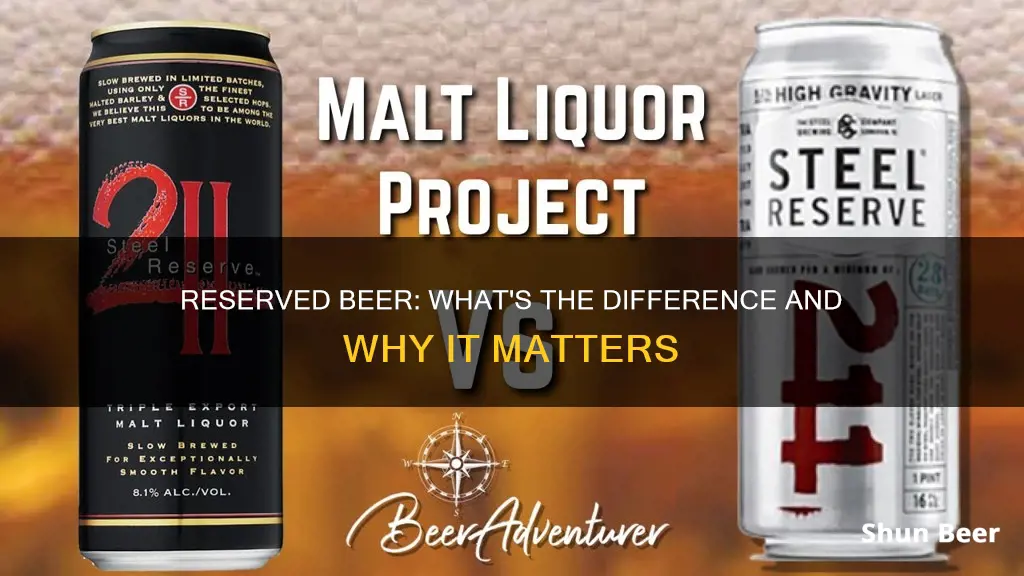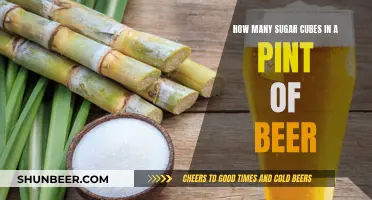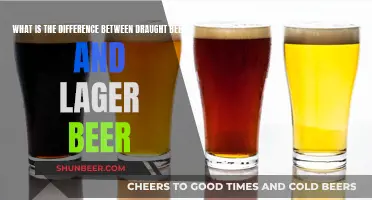
The term reserve is often used in the alcohol industry, particularly with wines and beers, to indicate a product of higher quality. In wines, the term is used to indicate that the product is of higher quality and has been aged longer before being sold. However, the use of the term reserve is not regulated in many places, including the US, and may simply be a marketing strategy. In beers, the term reserve is used similarly to indicate a full-bodied flavor with complex intensity.
| Characteristics | Values |
|---|---|
| Definition | Wine of a higher quality than usual, a wine that has been aged before sale, or both |
| Origin | The term likely originated from winemakers holding back or 'reserving' some of their best wine from a particularly productive and good-tasting vintage |
| Implication | Higher quality wine that has been aged longer |
| Countries with specific requirements | Spain, Italy, Portugal, Austria |
| Countries without specific requirements | United States |
What You'll Learn
- In the US, the term 'reserved' has no legal meaning and is used as a marketing tool
- In Spain, 'Reserva' wines are aged for at least three years
- In Italy, 'Riserva' wines are aged for a minimum of two years
- In Portugal, 'Reserva' indicates a wine with a higher alcohol level
- In Austria, 'Reserve' wines have a minimum ABV of 13%

In the US, the term 'reserved' has no legal meaning and is used as a marketing tool
In the United States, the term "reserved" on wine bottles has no legal meaning and is primarily used as a marketing tool by wineries. While some wineries may use the term to indicate that a wine is of higher quality or has been aged longer, there are no regulations enforcing this. As a result, some wineries may use the term liberally to charge higher prices for their wines, regardless of their actual quality or age.
The lack of legal definition for the term "reserved" in the US is in contrast to other countries, such as Spain, Italy, and Portugal, where the use of "Reserva", "Riserva", or similar terms is regulated and indicates specific requirements for ageing and, in some cases, alcohol content. For example, in Spain, wines labelled as "Reserva" must be aged for at least three years, with at least six months of that time spent in oak barrels. Similarly, in Italy, the term "Riserva" indicates that a wine has been aged for a minimum of two years, with the specific requirements varying across different regions.
The Washington Wine Quality Alliance, a voluntary group of producers, is a notable exception in the US. They have established their own standards for the use of the term "reserve", limiting its use to a small percentage of a winery's production and requiring that these wines are designated as higher quality and priced accordingly.
While the term "reserved" may not carry any legal weight in the US, most winemakers respect the traditional implication of the word and typically use it for their top-tier wines. However, consumers should be aware that the presence of the term on a wine label may not always guarantee its quality or ageing, and it is often used as a marketing strategy.
Shiner Beer vs. Shiner Bock: What's the Difference?
You may want to see also

In Spain, 'Reserva' wines are aged for at least three years
In Spain, Reserva wines are aged for a minimum of three years, with at least one of those years spent in an oak barrel or cask before bottling and sale. This is a regulatory requirement for wines produced in DOCa Rioja, one of Spain's "Old World" wine appellations with stricter guidelines than their "New World" counterparts.
The terms Crianza, Reserva, and Gran Reserva refer specifically to the length of time a wine has been aged and the amount of time spent ageing in oak. These terms have nothing to do with the type of grape varietal used in production. Instead, they indicate the quality of the grape used, with grapes for these wines typically sourced from lower yield, older, and higher-quality vines with a higher sugar concentration and more defined, predictable tannin structure.
Reserva wines are the second tier of "Reserve" wines, sitting between Crianza and Gran Reserva. Crianza wines are aged for a minimum of two years, with at least one of those years in an oak barrel, while Gran Reserva wines are aged for a minimum of five years, with two of those years in oak.
In addition to Spain, the term "Reserva" on a wine bottle from Portugal or "Riserva" from Italy also indicates that the wine was made under a particular set of regulatory parameters, mostly referring to the time spent in barrels before release.
Domestic vs Imported Beer: What's the Real Difference?
You may want to see also

In Italy, 'Riserva' wines are aged for a minimum of two years
In Italy, the term "Riserva" on a wine label indicates that the wine was made under a specific set of regulations, primarily concerning the time it spends ageing in barrels and bottles before release. Each Italian wine region has a different definition of a Riserva wine, but most are aged for a minimum of two years to earn this label.
In Tuscany, Chianti Classico Riserva is made from Sangiovese grapes and must be aged for a minimum of two years in oak barrels and three months in bottles. The wine is well-refined and more complex than regular Chianti Classico. Brunello di Montalcino, another Tuscan wine, is also made from Sangiovese, specifically the Brunello clone, and has even stricter ageing requirements. Before release, it must be aged for a minimum of four years, with at least two of those years in oak. For a Brunello di Montalcino to be labelled as "Riserva", it must be aged for five years, with a minimum of two and a half years in oak.
In Piedmont, the neighbouring regions of Barolo and Barbaresco produce wines made from Nebbiolo grapes that also require extensive ageing. For a Barolo or Barbaresco to be labelled as "Riserva", it must be aged for at least five years, with a minimum requirement of three years of ageing in bottles and barrels. Barbaresco has a slightly lower minimum ageing requirement of two years between the barrel and bottle, and four years for the "Riserva" designation.
While the term "Riserva" on an Italian wine label generally indicates a minimum of two years of ageing, there are exceptions. For example, Amarone is aged for four years, and Barolo must be aged for over five years before leaving the cellar. Additionally, the "Gran Selezione" designation in Chianti requires an even longer ageing period of 30 months, compared to the 24 months required for Riserva.
The ageing process is essential to enhancing and improving the taste of wine. Italian wines, in particular, are known for their structure and ability to pair well with food, even as they age. As Italian wines get older, their body and flavours continue to complement dishes from their native regions. Therefore, Italian Riserva wines, with their extended ageing requirements, are expected to have more complex aromas and flavours than their non-Riserva counterparts.
Domestic vs Premium Beer: What's the Real Difference?
You may want to see also

In Portugal, 'Reserva' indicates a wine with a higher alcohol level
In Portugal, the word for beer is "cerveja", derived from the Latin "cerevisia". Beer has a long history in the country, dating back to the time of the ancient Roman province of Lusitania. Today, Portugal is among the largest beer producers and exporters in Europe.
When it comes to the term "Reserva" on beer labels, it typically indicates a beer with a higher alcohol content. In Portugal, the term "Reserva" on a wine label refers to a wine produced under specific regulatory parameters, mainly concerning the time it spends ageing in barrels. While there is no standard definition for "reserve" beers, they often imply higher quality and price.
In the case of Portuguese wines, the term "Reserva" indicates that the wine has been aged for a specific duration, contributing to its flavour and quality. This differs from country to country and even from producer to producer. For example, a "Reserva" wine from Spain or Portugal may have different ageing requirements than an "Riserva" wine from Italy.
Although there are exceptions, the term "reserve" on beer labels often carries no legal meaning, particularly in the United States, and is primarily a marketing tool. Some breweries may use the term to indicate higher quality or more expensive production methods, while others may apply it to their entire product line.
Explore Beer Diversity: Styles, Tastes, and Brewing Secrets
You may want to see also

In Austria, 'Reserve' wines have a minimum ABV of 13%
In Austria, Reserve wines have a minimum ABV of 13%. While the term "reserve" is often used as a marketing tool, particularly in the US, it carries more weight in Europe. In Spain, Portugal and Italy, the term "Reserva" or "Riserva" indicates that the wine has been made under specific regulations, particularly regarding the time spent ageing in barrels. In Austria, reserve wines are defined by their high alcohol content.
In contrast, beers with the label "reserve" do not necessarily have a higher ABV. For example, Sapporo Reserve is an all-malt lager with a 5.0% ABV, while the American lager Steel Reserve has a notably higher ABV of 8.1%.
In Austria, the most popular beers are generally lower in alcohol content than reserve wines. For instance, the country's most consumed beer, Ottakringer Helles, has an ABV of 5.2%, while other popular options, such as Stiegl and Hallstatt Das Bier, have even lower alcohol contents of 4.9% and 4.5%, respectively.
Therefore, while the term "reserve" may indicate a higher ABV for wines in Austria, the same label on beers does not necessarily signify a higher alcohol content.
Cider vs Beer: What Sets Them Apart?
You may want to see also
Frequently asked questions
Sapporo Reserve Beer is an all-malt lager, brewed to deliver a full-bodied flavor with a complex intensity and layers of delicious lager flavor.
Sapporo Reserve Beer has an ABV of 5.0%.
Sapporo Reserve Beer is brewed in the U.S., Canada, and Vietnam.







